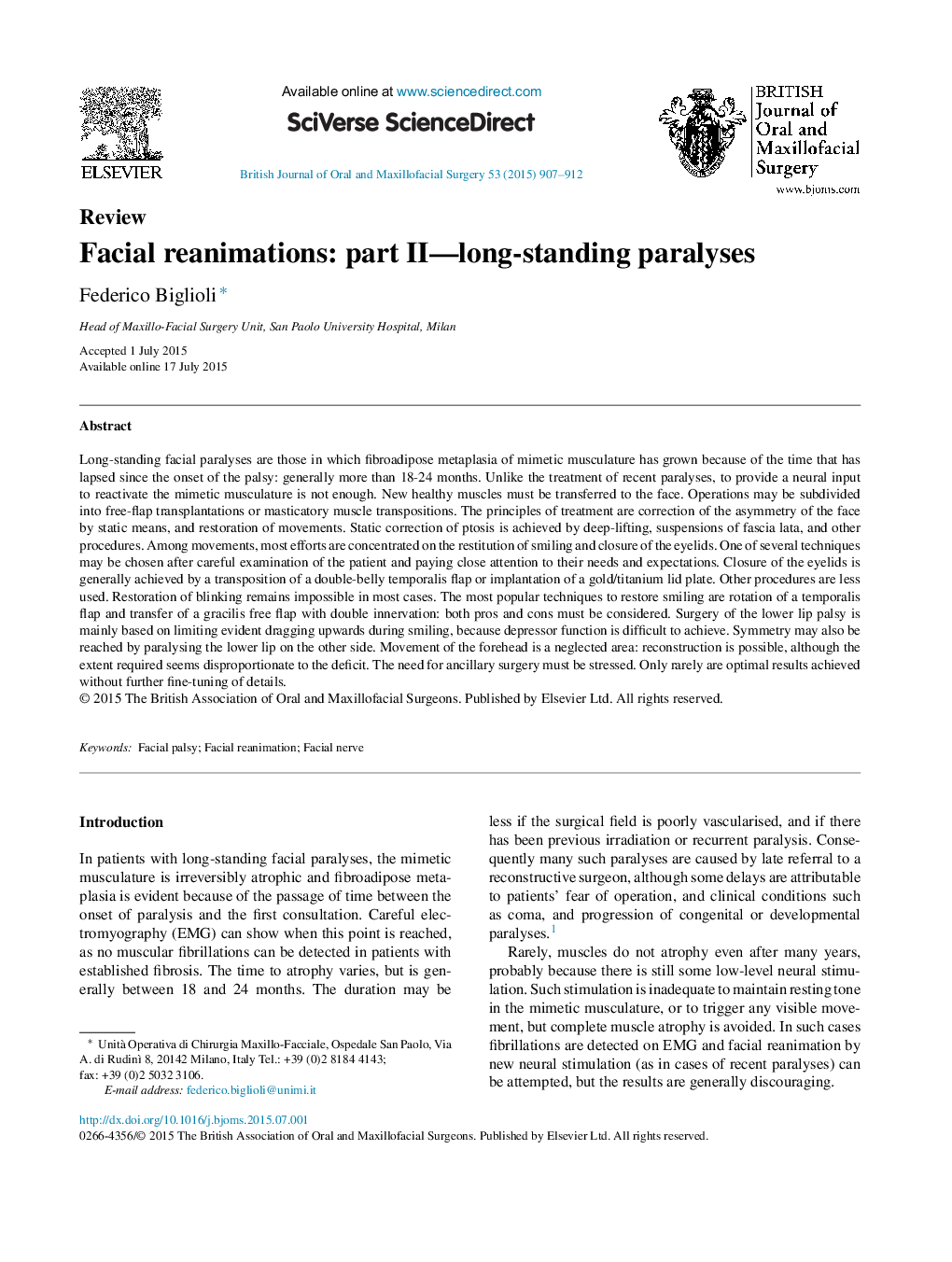| کد مقاله | کد نشریه | سال انتشار | مقاله انگلیسی | نسخه تمام متن |
|---|---|---|---|---|
| 3123562 | 1583707 | 2015 | 6 صفحه PDF | دانلود رایگان |

Long-standing facial paralyses are those in which fibroadipose metaplasia of mimetic musculature has grown because of the time that has lapsed since the onset of the palsy: generally more than 18-24 months. Unlike the treatment of recent paralyses, to provide a neural input to reactivate the mimetic musculature is not enough. New healthy muscles must be transferred to the face. Operations may be subdivided into free-flap transplantations or masticatory muscle transpositions. The principles of treatment are correction of the asymmetry of the face by static means, and restoration of movements. Static correction of ptosis is achieved by deep-lifting, suspensions of fascia lata, and other procedures. Among movements, most efforts are concentrated on the restitution of smiling and closure of the eyelids. One of several techniques may be chosen after careful examination of the patient and paying close attention to their needs and expectations. Closure of the eyelids is generally achieved by a transposition of a double-belly temporalis flap or implantation of a gold/titanium lid plate. Other procedures are less used. Restoration of blinking remains impossible in most cases. The most popular techniques to restore smiling are rotation of a temporalis flap and transfer of a gracilis free flap with double innervation: both pros and cons must be considered. Surgery of the lower lip palsy is mainly based on limiting evident dragging upwards during smiling, because depressor function is difficult to achieve. Symmetry may also be reached by paralysing the lower lip on the other side. Movement of the forehead is a neglected area: reconstruction is possible, although the extent required seems disproportionate to the deficit. The need for ancillary surgery must be stressed. Only rarely are optimal results achieved without further fine-tuning of details.
Journal: British Journal of Oral and Maxillofacial Surgery - Volume 53, Issue 10, December 2015, Pages 907–912